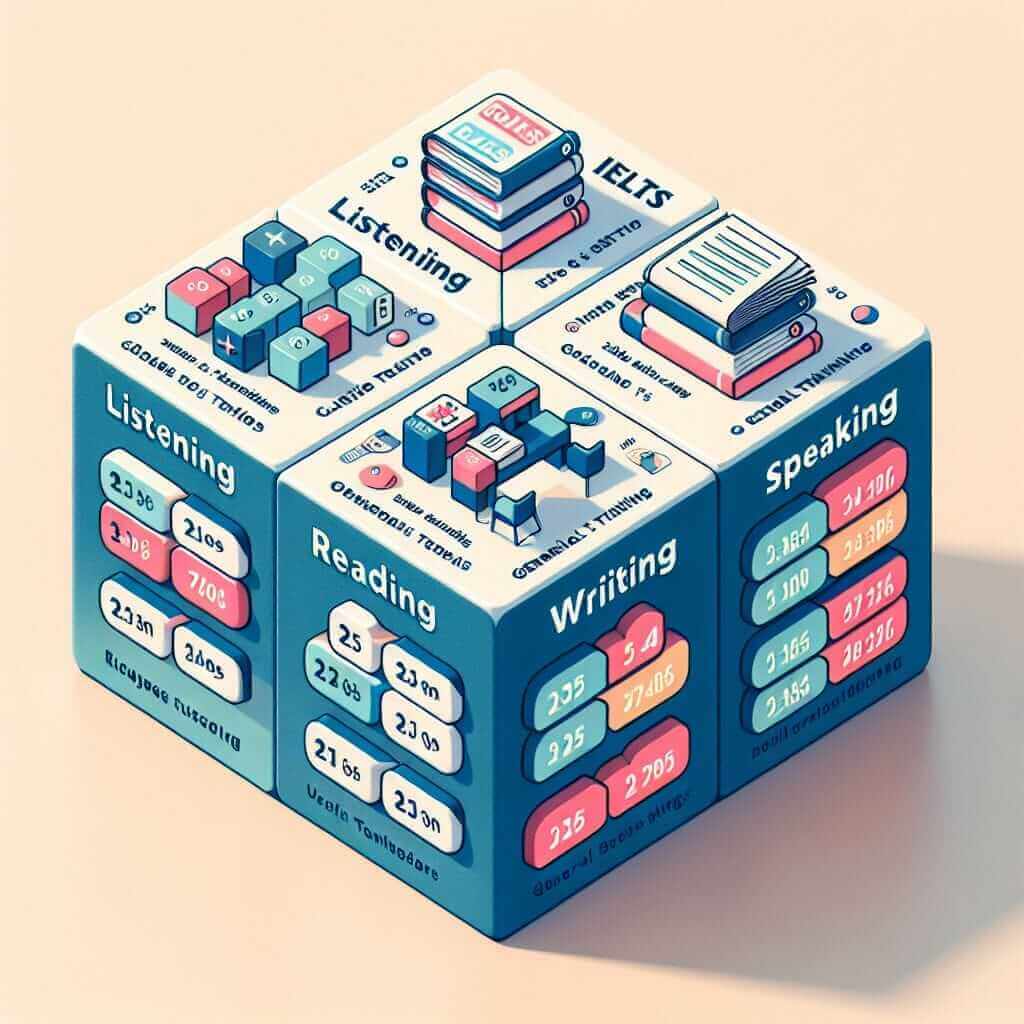Are you preparing to take the IELTS exam and feeling a bit overwhelmed by the process? It’s completely understandable! Understanding the structure and content of the IELTS test is crucial for effective preparation. In this comprehensive guide, I’ll break down the IELTS exam format, offering insights gained from my 20+ years of experience as an IELTS instructor.
Understanding the IELTS Test Format
The IELTS, or International English Language Testing System, is designed to assess the English language proficiency of non-native speakers. There are two modules to choose from, depending on your reason for taking the test:
- IELTS Academic: For those applying for higher education or professional registration in an English-speaking environment.
- IELTS General Training: For those migrating to an English-speaking country (Australia, Canada, New Zealand, UK), undertaking work experience, or applying for training programs.
Both modules assess your abilities across four key language skills:
- Listening: This section tests your ability to comprehend information presented in various native-speaker accents.
- Reading: This section evaluates your ability to understand different text types and answer questions based on the information provided.
- Writing: This section requires you to demonstrate your written communication skills through essays (Academic) or letters/reports (General Training).
- Speaking: This section assesses your fluency, vocabulary, grammatical range, and pronunciation in a face-to-face interview.

A Closer Look at Each Section
Listening (Both Modules – 30 minutes)
- Number of Sections: 4
- Question Types: Multiple choice, matching, plan/map/diagram labeling, form completion, note completion, sentence completion, short-answer questions, and summary completion.
- Audio Types: A range of accents are used, and you’ll encounter various scenarios like conversations, lectures, and discussions.
Reading (Academic – 60 minutes, General Training – 60 minutes)
Academic
- Number of Sections: 3
- Text Types: Extracts from books, journals, magazines, and newspapers, often containing academic vocabulary and complex sentence structures.
General Training
- Number of Sections: 3
- Text Types: A mix of everyday texts like advertisements, notices, company handbooks, and extracts from books, magazines, and newspapers.
Question Types (Both Modules): Similar to the Listening section, with the addition of True/False/Not Given and Yes/No/Not Given questions.
Writing (Academic – 60 minutes, General Training – 60 minutes)
Academic
- Task 1: Describe, summarize, or explain visual information presented in a graph, chart, table, or diagram (150 words minimum).
- Task 2: Write an essay in response to a point of view, argument, or problem (250 words minimum).
General Training
- Task 1: Write a letter in response to a given situation (150 words minimum).
- Task 2: Write an essay in response to a point of view, argument, or problem (250 words minimum).
Speaking (Both Modules – 11-14 minutes)
- Part 1: Introduction and interview on familiar topics (4-5 minutes)
- Part 2: Individual long turn – you’ll speak for 1-2 minutes on a given topic (3-4 minutes total, including 1 minute of preparation).
- Part 3: Two-way discussion – a deeper discussion related to the topic in Part 2 (4-5 minutes).
Tips for IELTS Success
- Familiarize yourself with the test format. Understanding what to expect in each section will minimize anxiety and help you manage your time effectively.
- Practice, practice, practice! Take as many practice tests as possible to build your skills and stamina.
- Focus on your weaknesses. Identify your areas of weakness and dedicate extra time to improving them.
- Expand your vocabulary. A strong vocabulary is essential for all sections of the IELTS.
- Pay attention to your grammar. Grammatical accuracy is crucial for a high score in the Writing and Speaking sections.
- Develop effective time management strategies. Each section has a time limit, so learn to pace yourself effectively.
Remember: Preparation is key to achieving your desired IELTS score. With dedication and the right strategies, you can succeed on the IELTS exam!